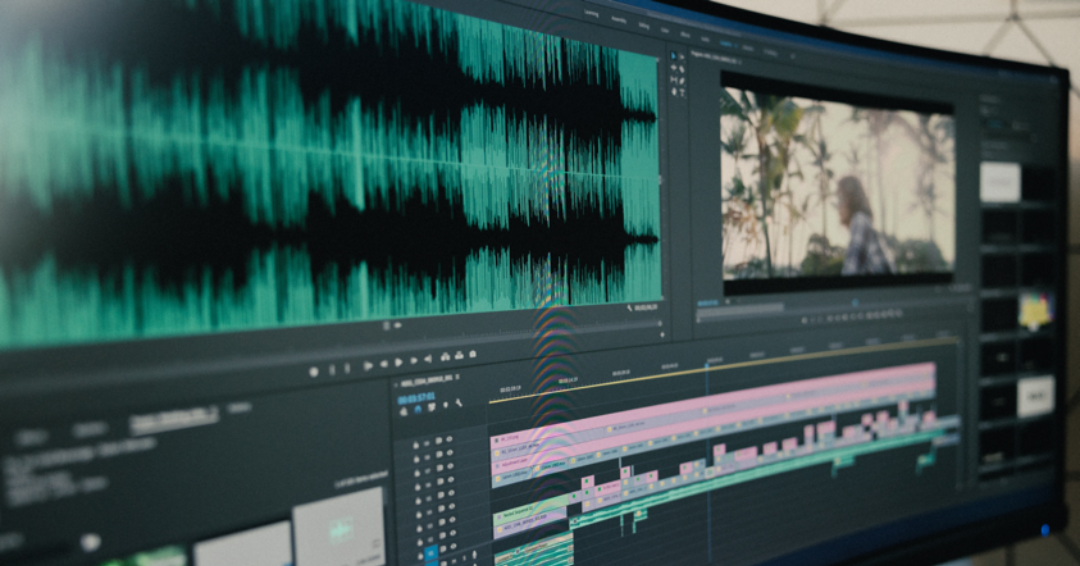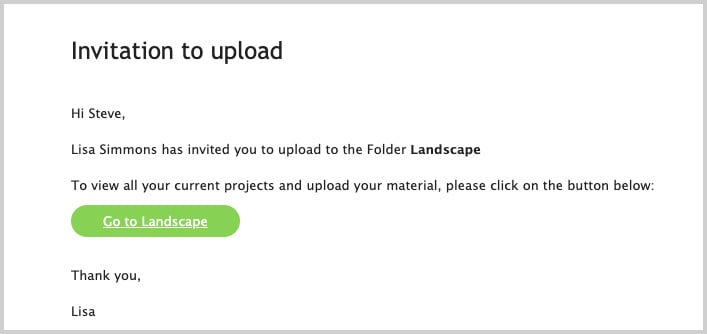How a DAM Can Optimize Your Digital Media Supply Chain
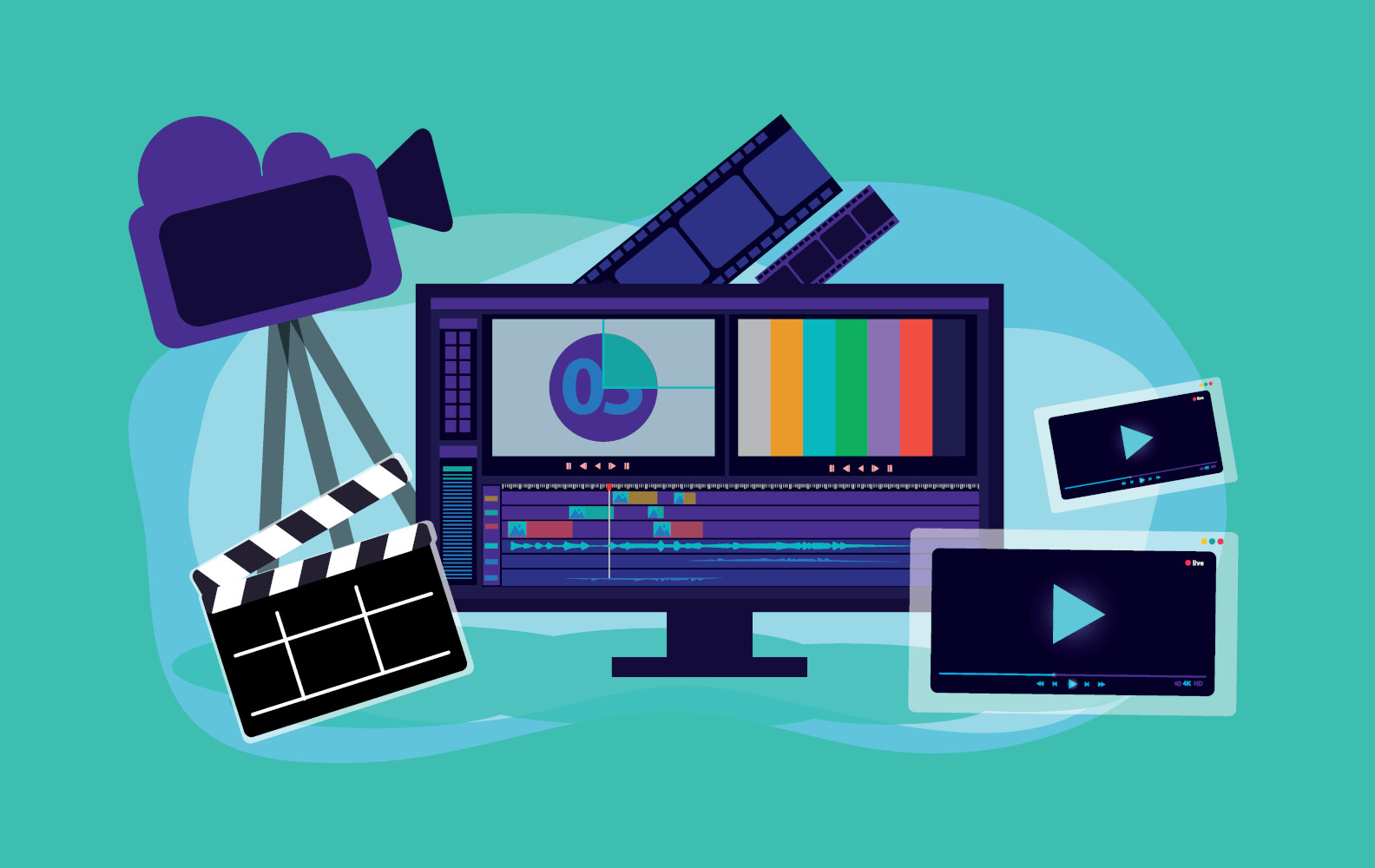
When you’re shipping a physical package, the fewer stops that package makes on its distribution journey, the safer, faster, and less expensive it is to transport.
Likewise, shepherding a digital asset through planning, production, and distribution is a lot simpler when there are fewer systems involved. However, up to now, there haven’t been many options for smart digital asset logistics.
That’s where it makes sense for digital asset management systems to step up to fill in that gap. The more tasks your DAM solution can take on, the more secure and the faster your production can be.
Take a look at the sample workflows in a media supply chain below to see how the right digital asset management solution can be your central point for tools, workflows, and communication, making it easier to get from concept to content.
Pre-production Workflows
Even before you have the asset in hand, ideation can start in your digital asset management system.
For instance, some DAMs have project management features, which can let users set up tasks requesting assets. This early setup can organize workflows from within the DAM, letting you connect assets directly to projects, without a third-party project management tool.
Let’s say you’re creating an ad campaign. You need to send photographers out in the field to shoot images to go along with it. Here’s what your pre-production workflow might look like:
- Create folders. Make folders and placeholders for the campaign.
- Request assets. Create a task requesting assets attached to the folder.
- Assign roles. Choose who will own the project, who should be assigned to produce deliverables, and so on.
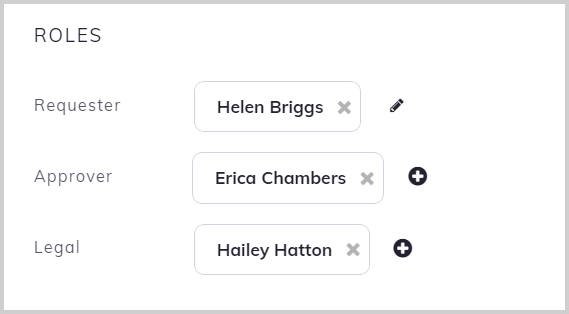
- Identify deliverables. What elements will you need to complete the campaign?
Ways you save
By handling planning and project management at the source for your assets, you cut out the need to introduce new third-party project management tools. Plus, planning will save you time in the long run, since assets will be easy to organize going forward. Participants will be kept in the loop throughout, so it’s less likely project elements will fall through the cracks.
Production Workflows
With pre-production taken care of, you can create workflows for specific sets of assets. And the the workflows are then automatically tied to the campaign you’ve already created, ensuring that the assets created during the production phase are attached to the campaign and the right people are notified once those assets are added. In the case of our photo shoot, you could do any of the following:
- Create subfolders for the shoot. Tasks related to the shoot and assets can live in this space.
- Assign roles and participants. In this case, you might be dealing with just a photographer, but you could expand on this if you were handling an elaborate shoot or a video workflow, including talent, production staff, hair and makeup, etc.
- Create a calendar. With a calendar view, you can incorporate a visual production timeline as well.
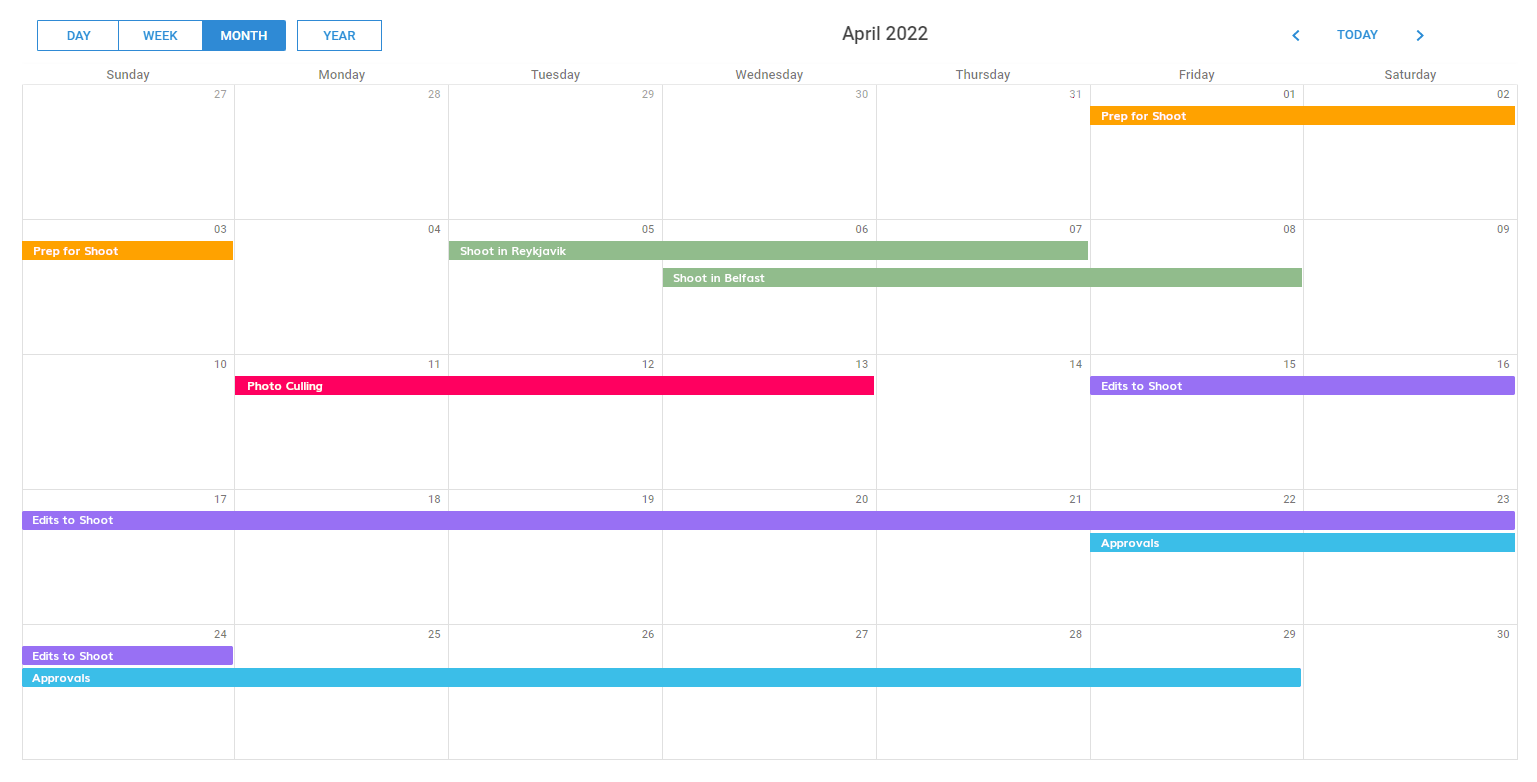
- Upload images. Your photographer can upload images directly into the subfolders you’ve created within the digital asset management platform, rather than relying on third-party storage to collect and migrate images.
Ways you save
With your DAM solution supporting key project management tasks, you don’t need to seek out additional third-party tools. Upload is quick and secure for photographers or videographers, so files can’t get lost or delayed post-shoot. The organization we set up in pre-production pays off now, since files are easy to find and automatically associated with the larger campaign, saving time for everyone involved. In addition, this centralized media supply chain reduces dependencies on third-party storage apps, which can be expensive and lead to disorganized assets or lack of version control.
Post-Production Workflows
The advantage of supporting the media supply chain from within your DAM solution is that the transition to post-production is immediate and seamless, with all your assets already in place, ready for review.
- Assign editors. Assign editors directly or assign the task to a group of editors, then let the one with availability claim the work from a queue within the digital asset management interface.
- Access integrations. Integrate with photo or video editing software, such as those found in Adobe Creative Cloud. Look for a plugin that offers check-in/check-out, and also syncs automatically. That way edits get saved back into the system instead of the editor’s desktop.
- Annotations. Creative teams can give editors feedback using annotation features. Compare annotations across different versions of the asset, so you can make sure requested changes were made.
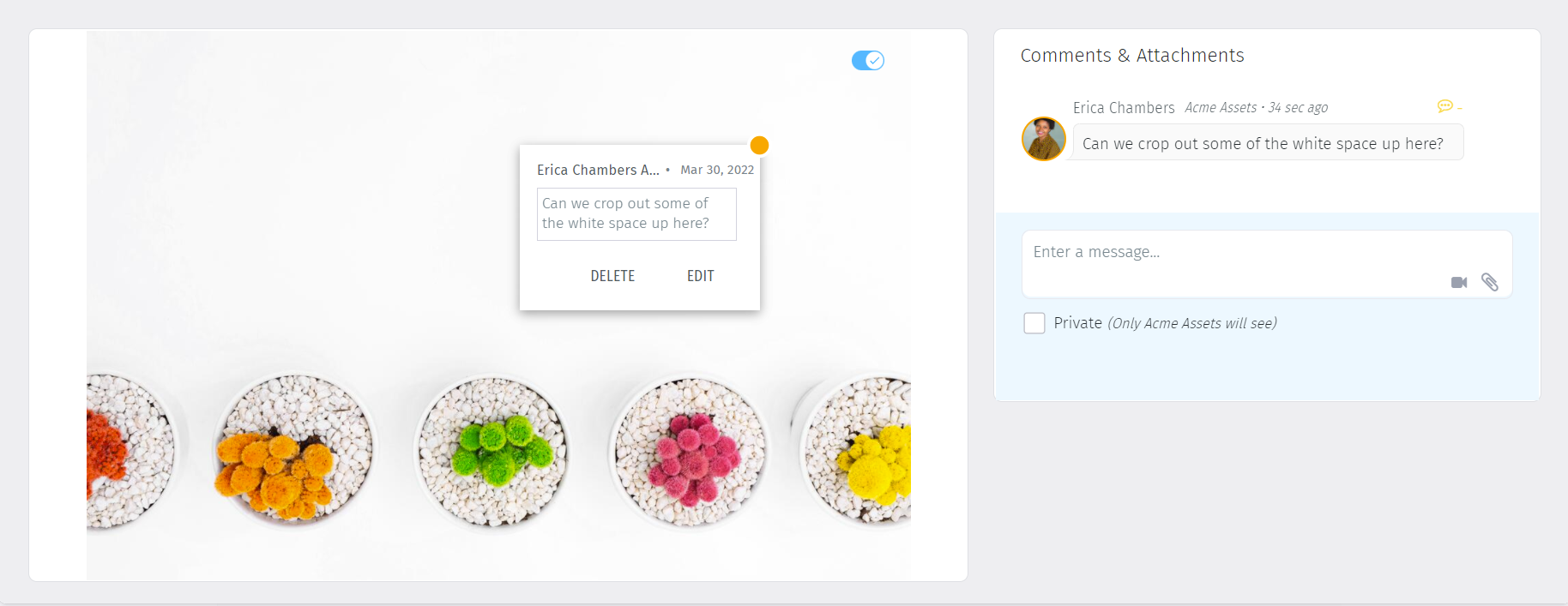
- Upload final edits. You should be able to upload final images and versions of your original, raw materials to your digital asset management system. At the same time, all creative direction and details are still connected to the original request for images, so you have an associated history for each and every asset linked to the campaign.
- Photo culling or talent approval. If you need to review large numbers of images at once or if you have talent that needs to approve images before they can be used, a DAM solution can offer a dedicated space for that as well. That way, you don’t have to conduct reviews in multiple systems and then manually re-upload your assets. Your media is always secure and connected to your campaign.
Ways you save
Keeping that ongoing connection to the DAM ensures version control, so you’re never using the wrong version of an asset, and older versions stay available for reference later on. It also lets you keep track of the “story” of your assets — the original, the edits that were made, and the comments that inspired those edits.
Photo culling or talent approvals save time and let assets stay where they started – in your DAM – ensuring better security, organization, and efficiency.
Distribution Workflows
Once assets are ready to release, distribution becomes a lot easier. DAM managers or archivists can tag assets so that they’re available to whomever might need them next.
- Artificial intelligence. AI can enrich your metadata through facial recognition, OCR, and auto-captioning and transcription.
.png?width=1244&name=facial%20recognition%20for%20video%20(2).png)
- Centralized, optimized source. Creative, marketing, sales, and archival teams can all be connected through the DAM, giving assets new life as additional teams find use for them.
- Integrations. Your DAM should be able to connect to everything—including your social media networks, streaming partners, and your CMS, so you can quickly, if not automatically, push out content as soon as it’s ready to go.
Ways you save
Artificial intelligence speeds up the time you spend tagging assets and makes surfacing assets much easier. A DAM solution that multiple departments can connect to lets more users take advantage of your expensive assets. And integrations with social media, CMS systems, and so on avoids time spent transferring assets to those systems manually.
Digital asset management systems are of course integral to the media supply chain, automating tasks, simplifying asset, content, and metadata synchronization, and bringing order to the often chaotic creative process. But the above examples aren’t a thought experiment. They’re possible and utilized by many, today.
To learn more about how Orange Logic can help you with your DAM needs, schedule a call today!
Streamline your Production Lifecycle with Orange Logic Digital Asset Management
- Tailored dashboards for every user
- Unprecedented storage flexibility
- Best-in-breed video support

